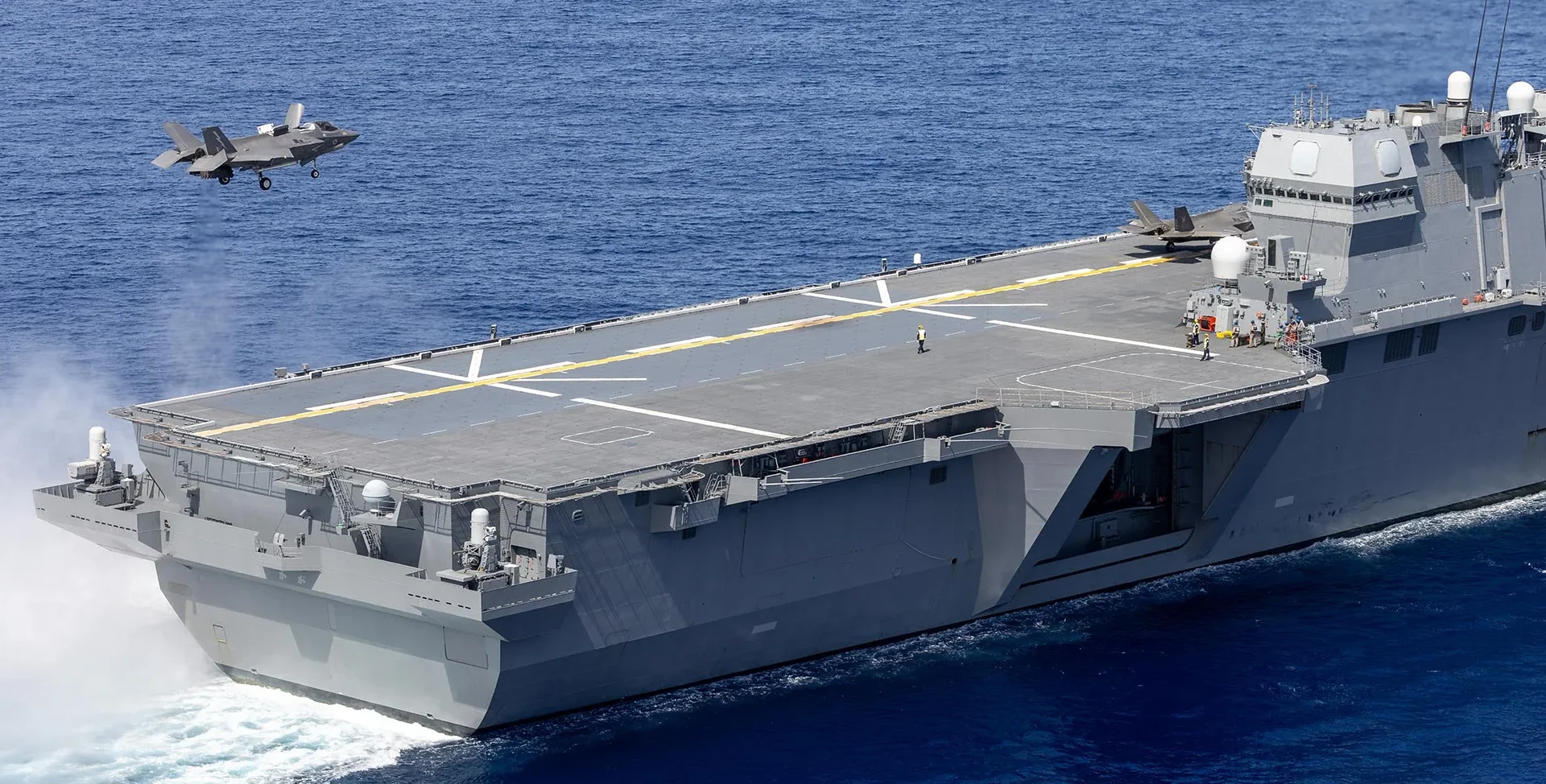HMS Prince of Wales has concluded a landmark series of joint operations with the Japan Maritime Self-Defence Force in the Philippine Sea, the first time a UK jet has landed on a Japanese warship. The exercise, part of Operation HIGHMAST, brought together four powerful multinational task groups.
The 9-day exercise saw the UK Carrier Strike Group integrate with JS Kaga’s battle group, USS George Washington’s Carrier Strike Group Five, and the US Marine Corps Amphibious Ready Group centred on USS America. The UKCSG escorts HMS Dauntless, HMS Richmond, HNoMS Roald Amundsen, HMAS Brisbane, ESPS Méndez Núñez, participated supported by RFA Tidespring. In total, 11 warships and 23 aircraft from six nations took part.
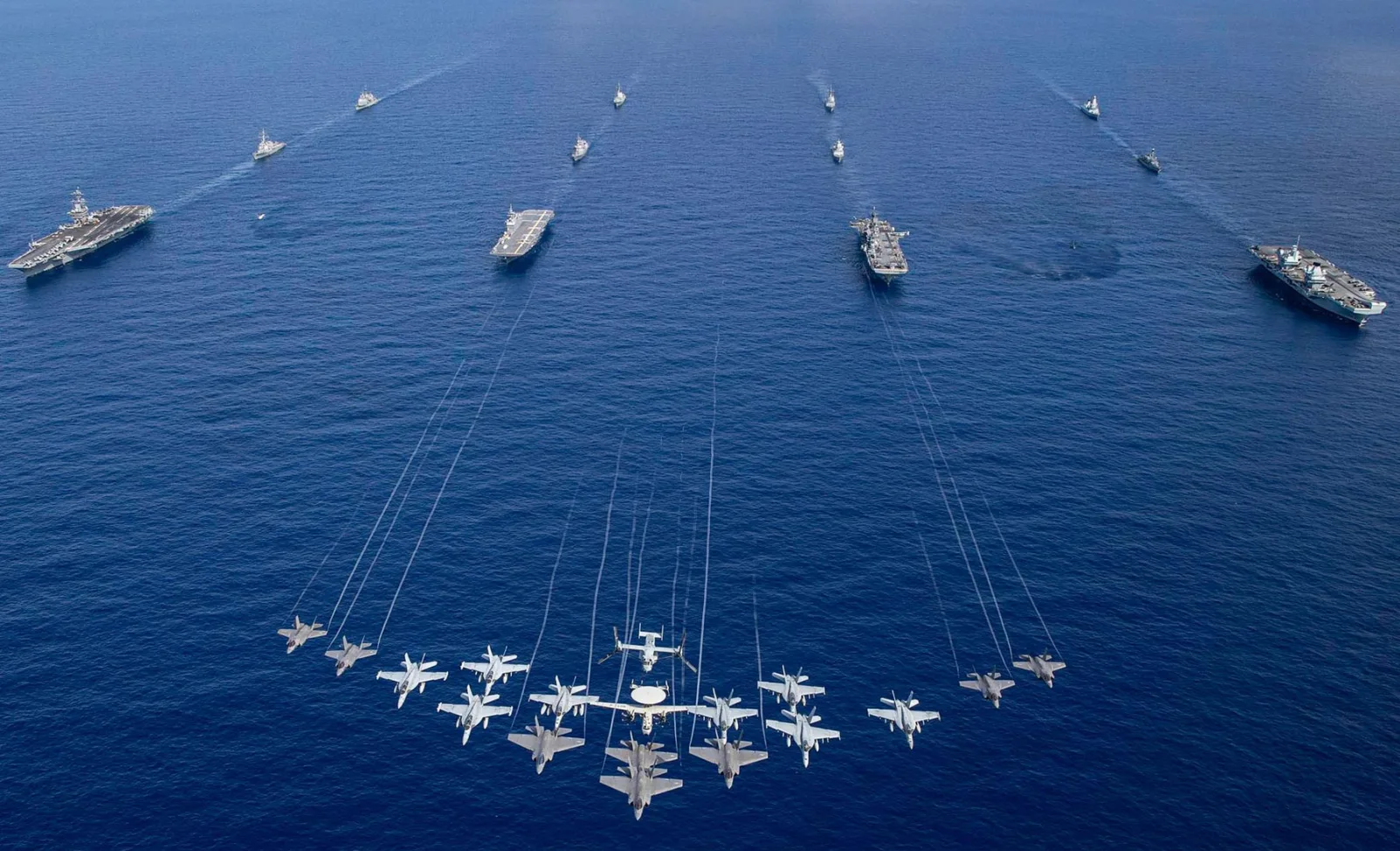 Spectacular flypast. HMS Prince of Wales in company with USS George Washington, USS America, JS Kaga and escorting warships.
Spectacular flypast. HMS Prince of Wales in company with USS George Washington, USS America, JS Kaga and escorting warships.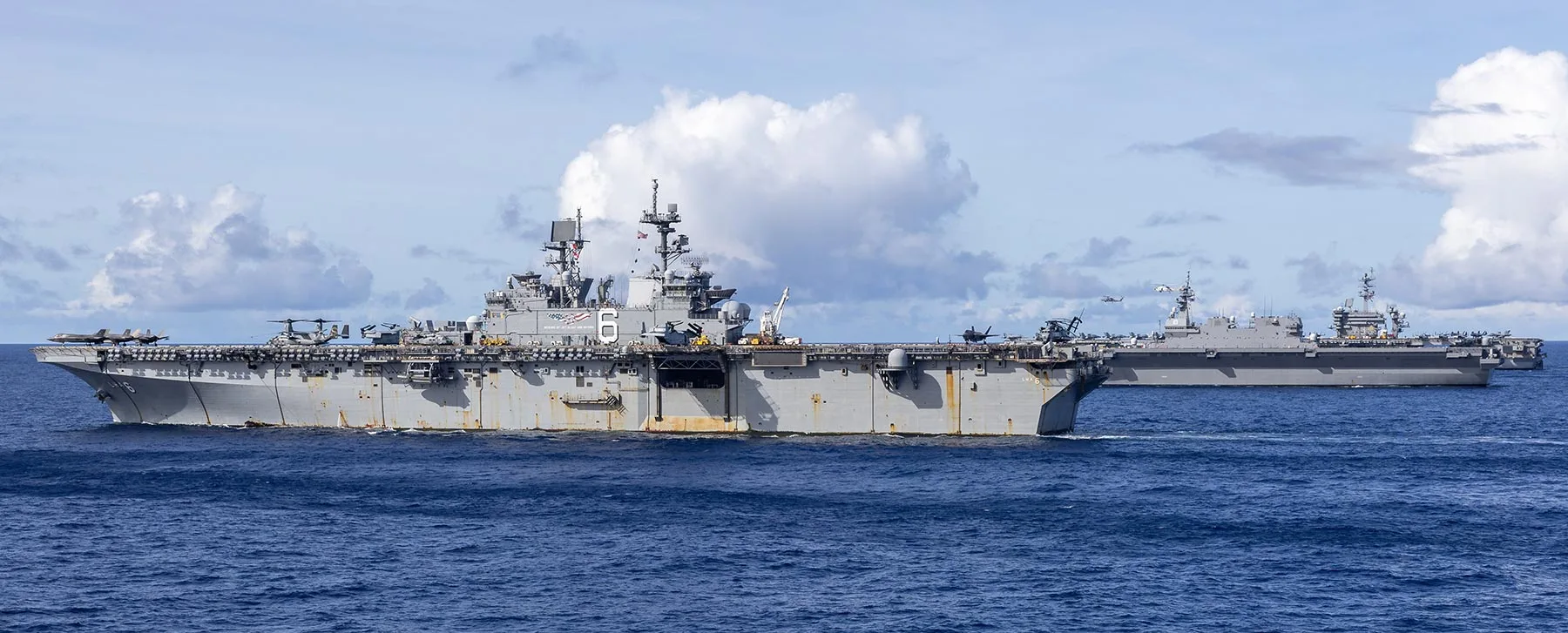 Flat tops as far as the eye can see…
Flat tops as far as the eye can see…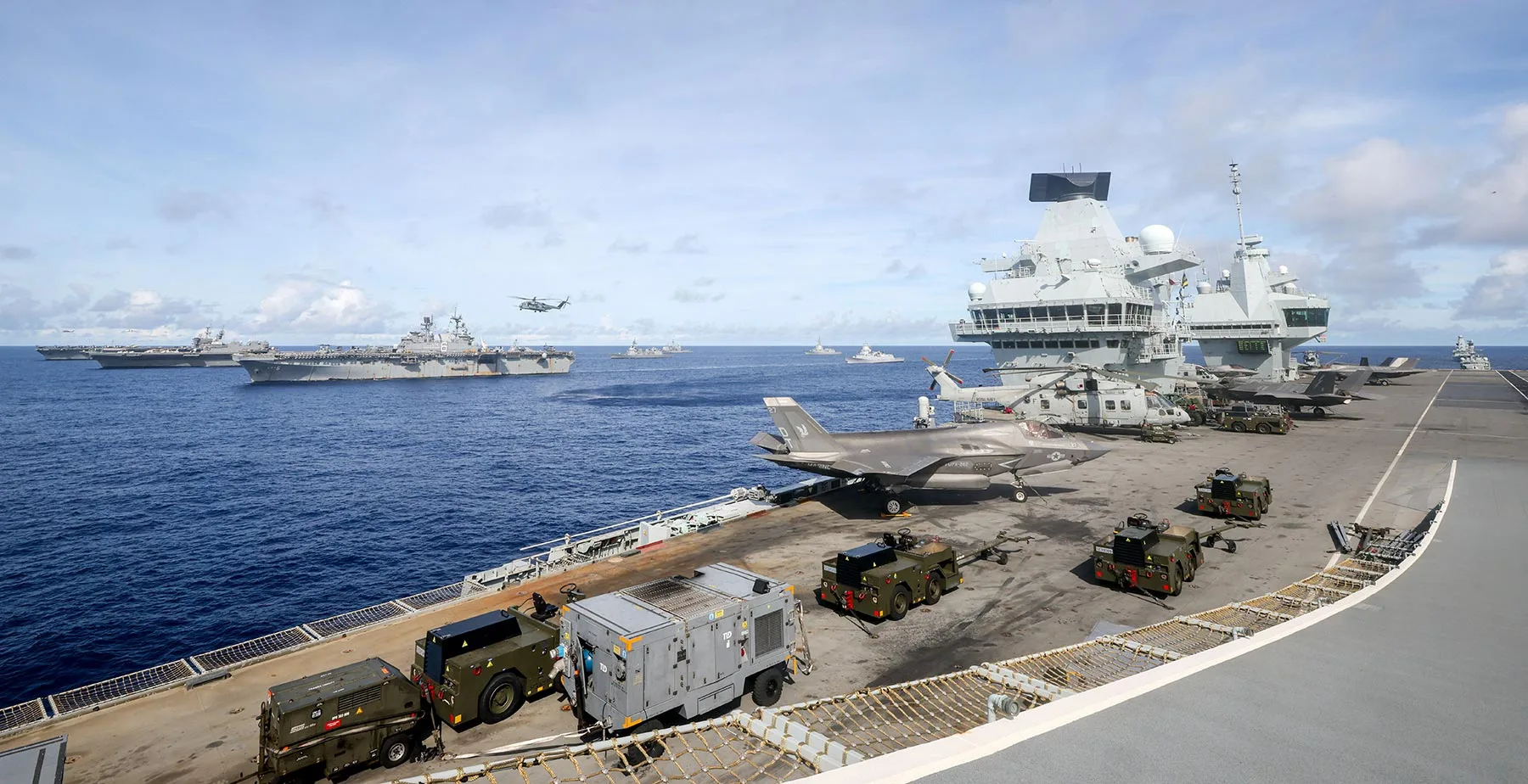
Exercises in the Philippine Sea included anti-submarine warfare serials, coordinated air defence drills, and replenishment operations. Allied helicopters, including the Merlin Mk4s of 845 Naval Air Squadron, flew to and from Japanese ships to build interoperability. The USMC’s ‘Bats’ of VMFA-242 temporarily detached two F-35Bs to Prince of Wales for joint deck operations, while MV-22 Osprey tiltrotors from USS America practised landings on the UK carrier.
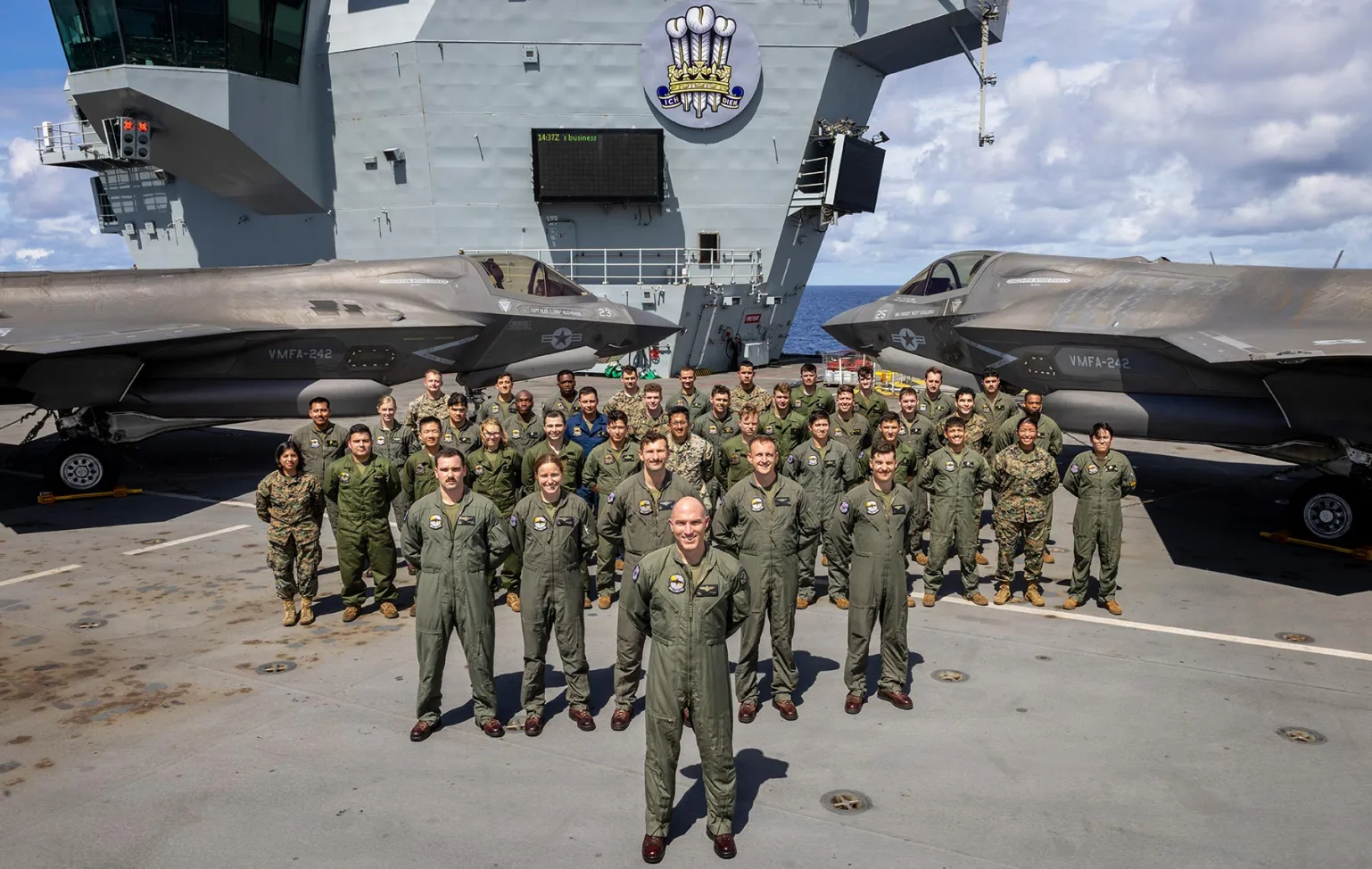 US Marine Corps F-35 squadron VMFA-242 with 2 jets embarked on HMS Prince of Wales for two weeks, during the ship’s transit between Australia and Japan.
US Marine Corps F-35 squadron VMFA-242 with 2 jets embarked on HMS Prince of Wales for two weeks, during the ship’s transit between Australia and Japan.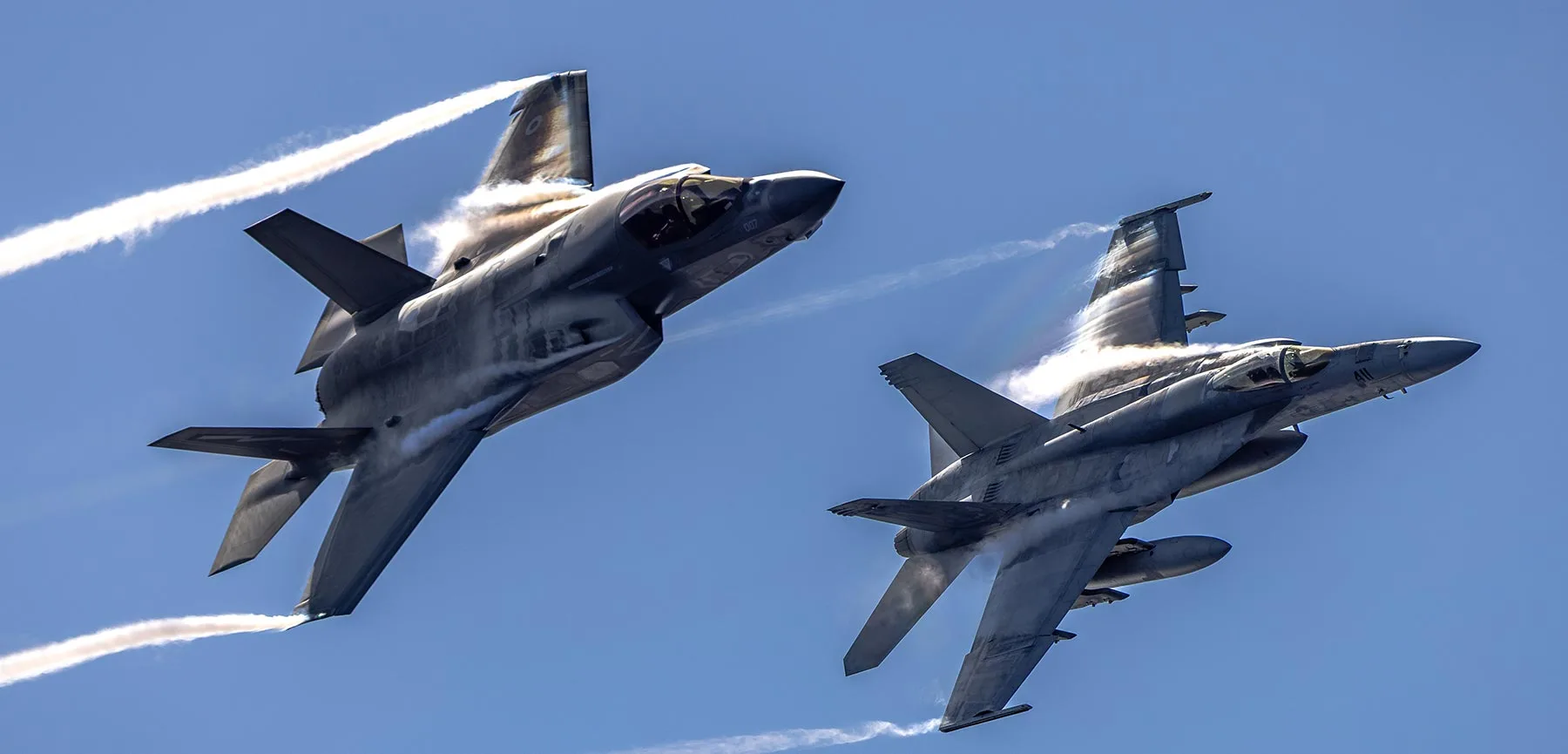 617 Sqn F-35B Lightning jet and US Navy F/A-18E fly past HMS Prince of Wales, 6 August.
617 Sqn F-35B Lightning jet and US Navy F/A-18E fly past HMS Prince of Wales, 6 August.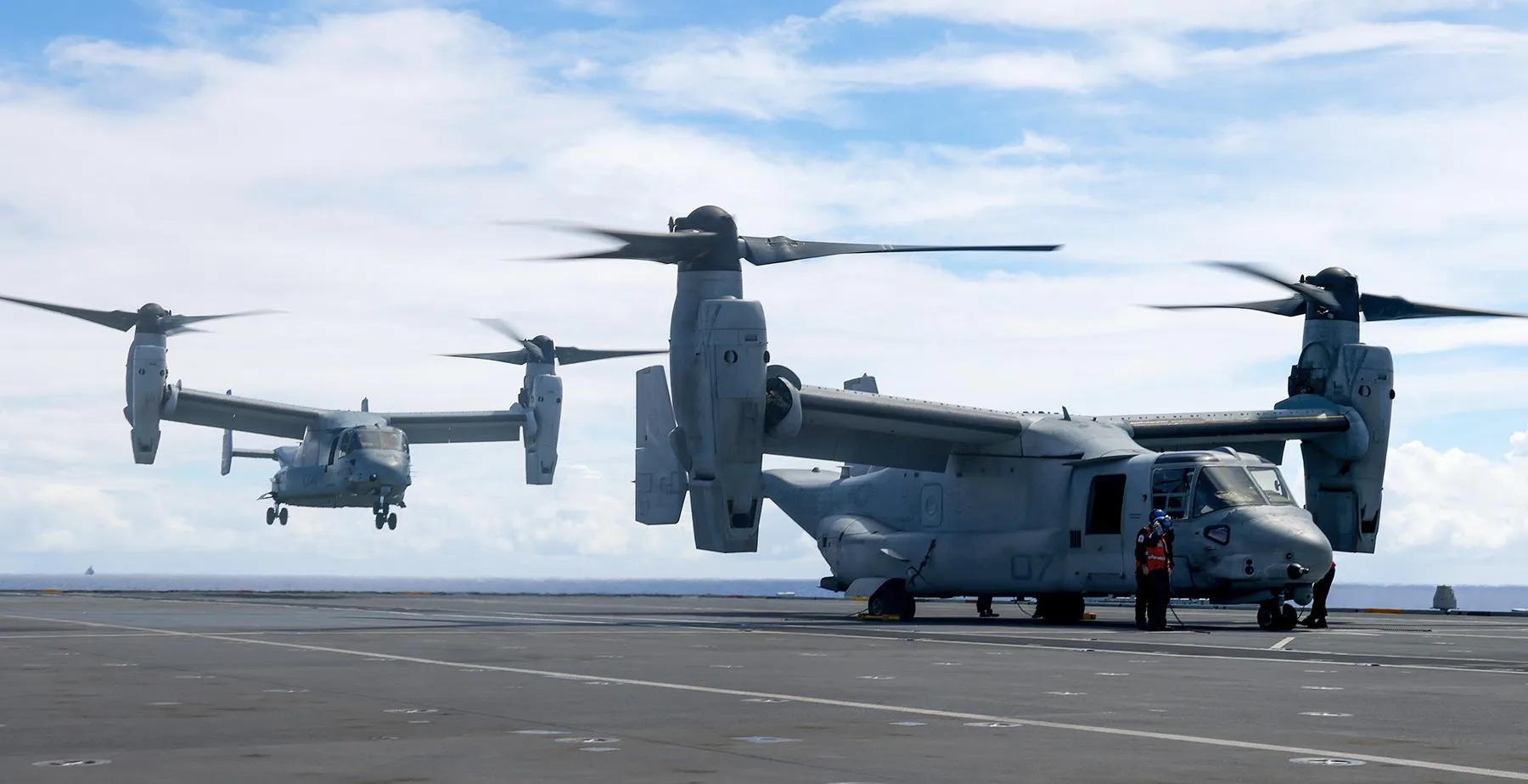 USMC MV-22 Osprey cross-decking to HMS Prince of Wales from USS America.
USMC MV-22 Osprey cross-decking to HMS Prince of Wales from USS America.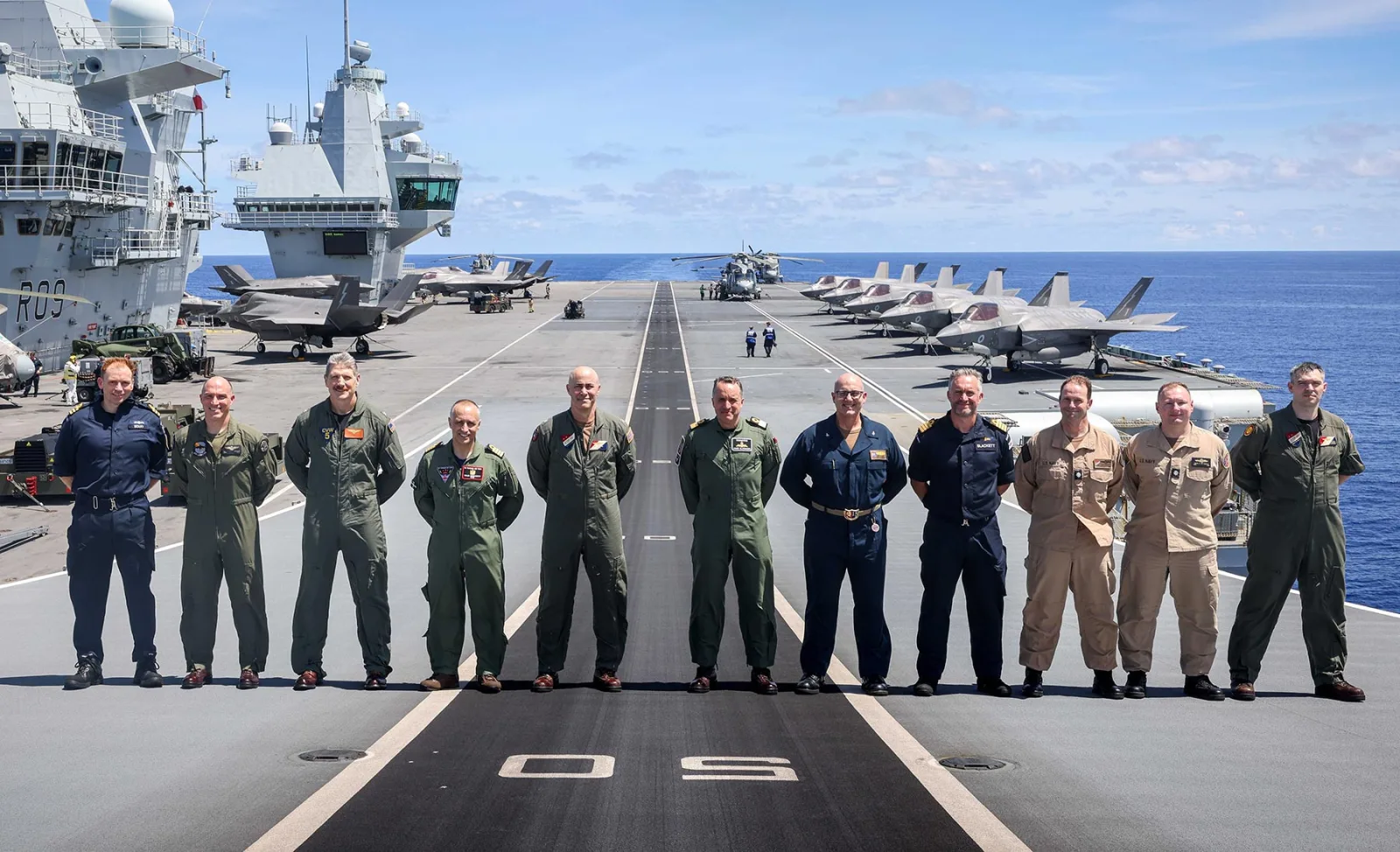 Commander UK Carrier Strike Group hosted Rear Admiral Eric Anduze US Navy (CTF70) and distinguished guests onboard HMS Prince of Wales.
Commander UK Carrier Strike Group hosted Rear Admiral Eric Anduze US Navy (CTF70) and distinguished guests onboard HMS Prince of Wales.
On leaving Australia, 3 F-35s from HMS Prince of Wales detached for Operation HIGHTOWER, supported by an RAF Voyager tanker, for exercises with the Republic of Korea (ROKAF) and Japan (JASDF) air forces. One of these aircraft (016), made an emergency diversion to Kagoshima Airport in south west Japan on 10th August, following an in-flight malfunction. Although a sensible precaution, this is the second diversion of a carrier aircraft to a civilian airport and has attracted a lot of negative media comment following the incident where a jet was stranded in India for 6 weeks. Japan is a trusted partner, now operating F-35s along with locally-based USMC jets; the incident is less of a concern and the aircraft is likely to be flying again quickly.
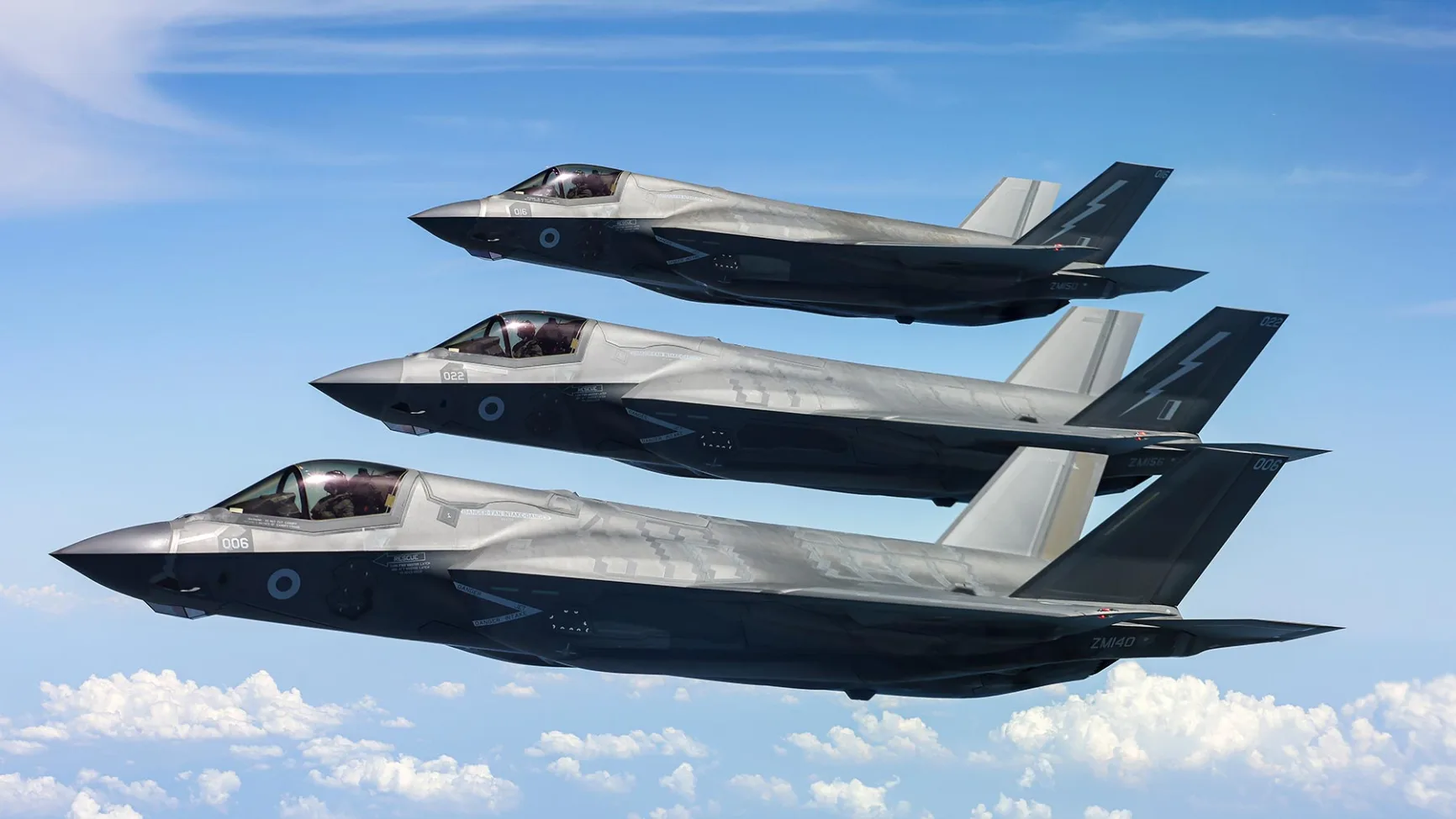 The three aircraft on operation Hightower pictured from RAF Voyager over the Pacific.
The three aircraft on operation Hightower pictured from RAF Voyager over the Pacific.
This phase followed earlier dual-carrier operations with USS George Washington during the Australia-led Talisman Sabre exercise, which included maritime strike training, air-to-air combat manoeuvres, and combined fixed- and rotary-wing operations. According to RN sources, the Philippine Sea drills have confirmed that allied carrier strike forces can operate in close proximity, share air assets, and project a coordinated maritime presence in the Indo-Pacific.
Cross-deck trials saw two 809 Naval Air Squadron jets land on JS Kaga, while Japanese and British pilots worked together on tactical intercepts, maritime strike serials, and air combat manoeuvres. Japan has only recently taken delivery of its first four F-35Bs, forming the initial element of a planned fleet of 42 aircraft. These are being progressively introduced alongside upgrades to JS Kaga and her sister ship JS Izumo to enable fixed-wing carrier operations for the first time in Japan’s post-war history.
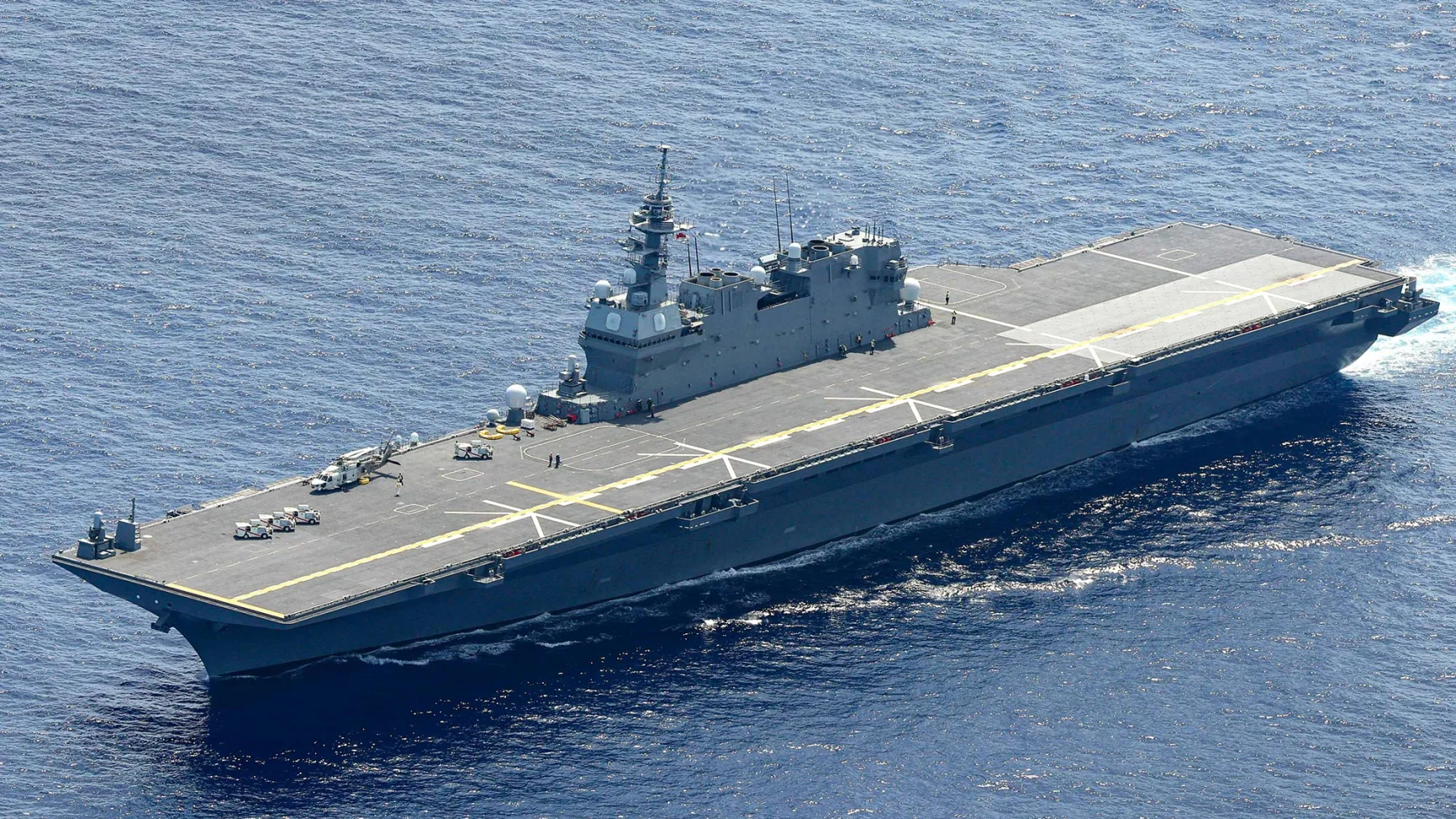 JS Kaga.
JS Kaga.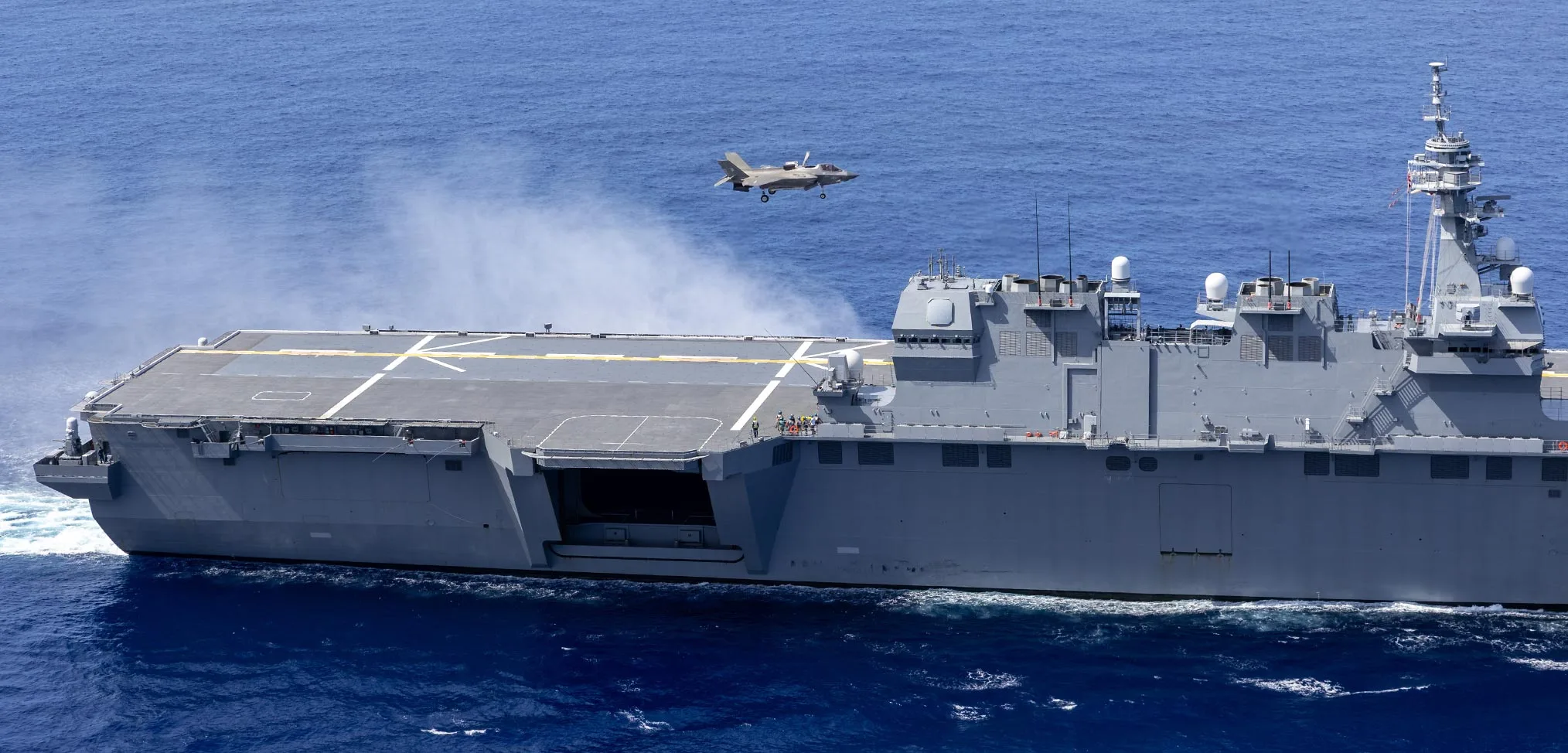 JS Kaga will be able to accomodate a total of up to 14 F-35Bs.
JS Kaga will be able to accomodate a total of up to 14 F-35Bs.
Tokyo’s decision to acquire the F-35B was announced in 2018 as part of its National Defence Program Guidelines, representing a major shift in JMSDF capabilities. The aircraft are being procured via the US Foreign Military Sales process, with deliveries continuing through the late 2020s. In parallel, JS Kaga and Izumo are undergoing multi-phase refits to convert them from ‘helicopter destroyers’, including strengthening of the flight deck, installation of heat-resistant coatings, modifications to aviation fuel systems, and changes to aircraft elevators to handle the jets’ weight and dimensions.
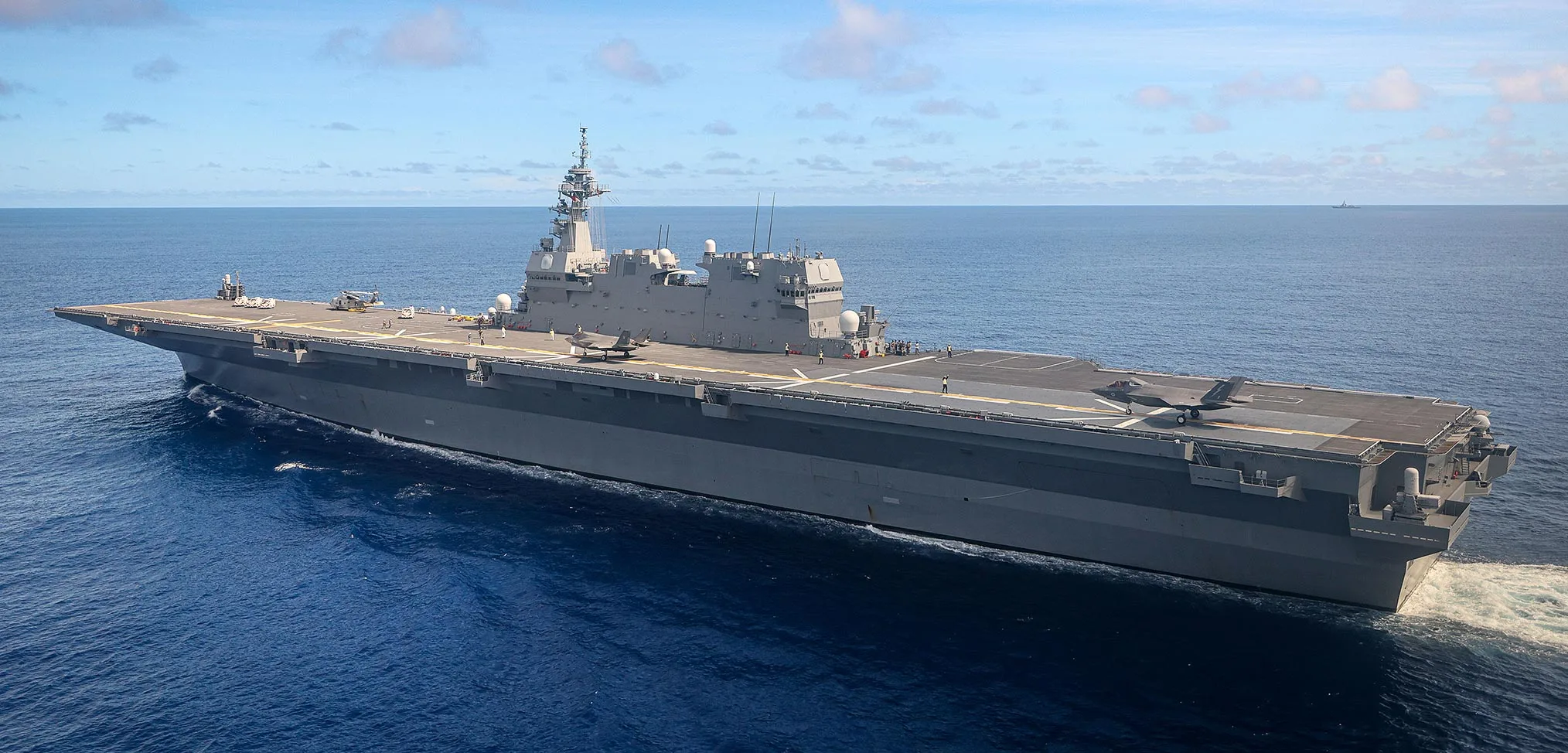 Two UK F-35s on JS Kaga.
Two UK F-35s on JS Kaga.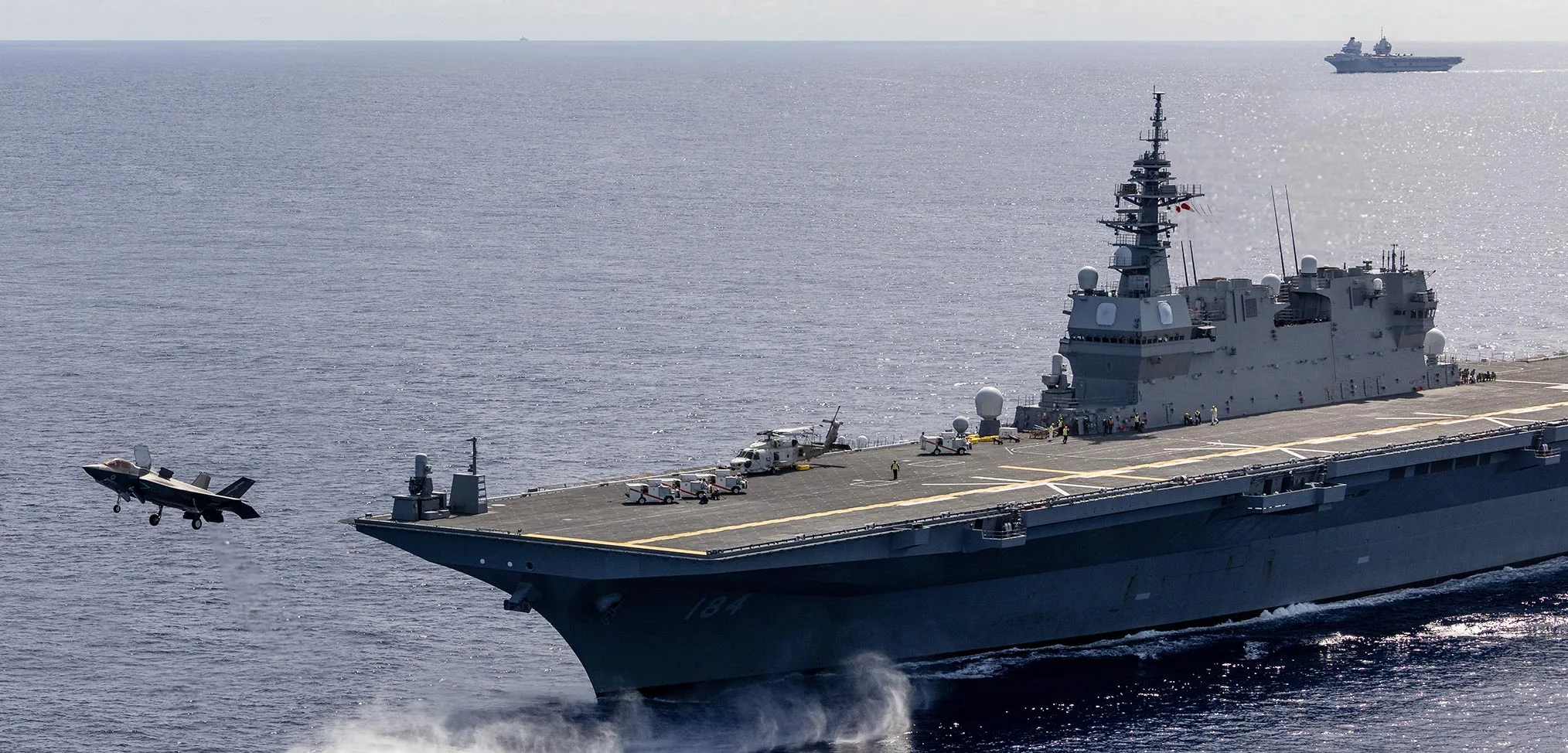
Japan’s F-35B force will be operated jointly by the JMSDF and the Japan Air Self-Defence Force (JASDF), with pilots currently training with US Marine Corps squadrons in the United States. Until sufficient home-grown expertise is built up, Japan will rely on close integration with allies for carrier aviation training and doctrine development, making this cross-deck evolution with the RN a significant milestone in accelerating operational readiness.
The RN–JMSDF link-up reflects the intent of the 2023 Hiroshima Accord to deepen security cooperation between the UK and Japan. For the RN, deploying a carrier strike group to the Western Pacific for sustained high-end operations underlines the “tilt” to the Indo-Pacific set out in the UK’s Integrated Review. For Japan, the ability to work seamlessly with allied F-35B carriers enhances deterrence and strengthens its maritime security posture at a time of growing regional competition.
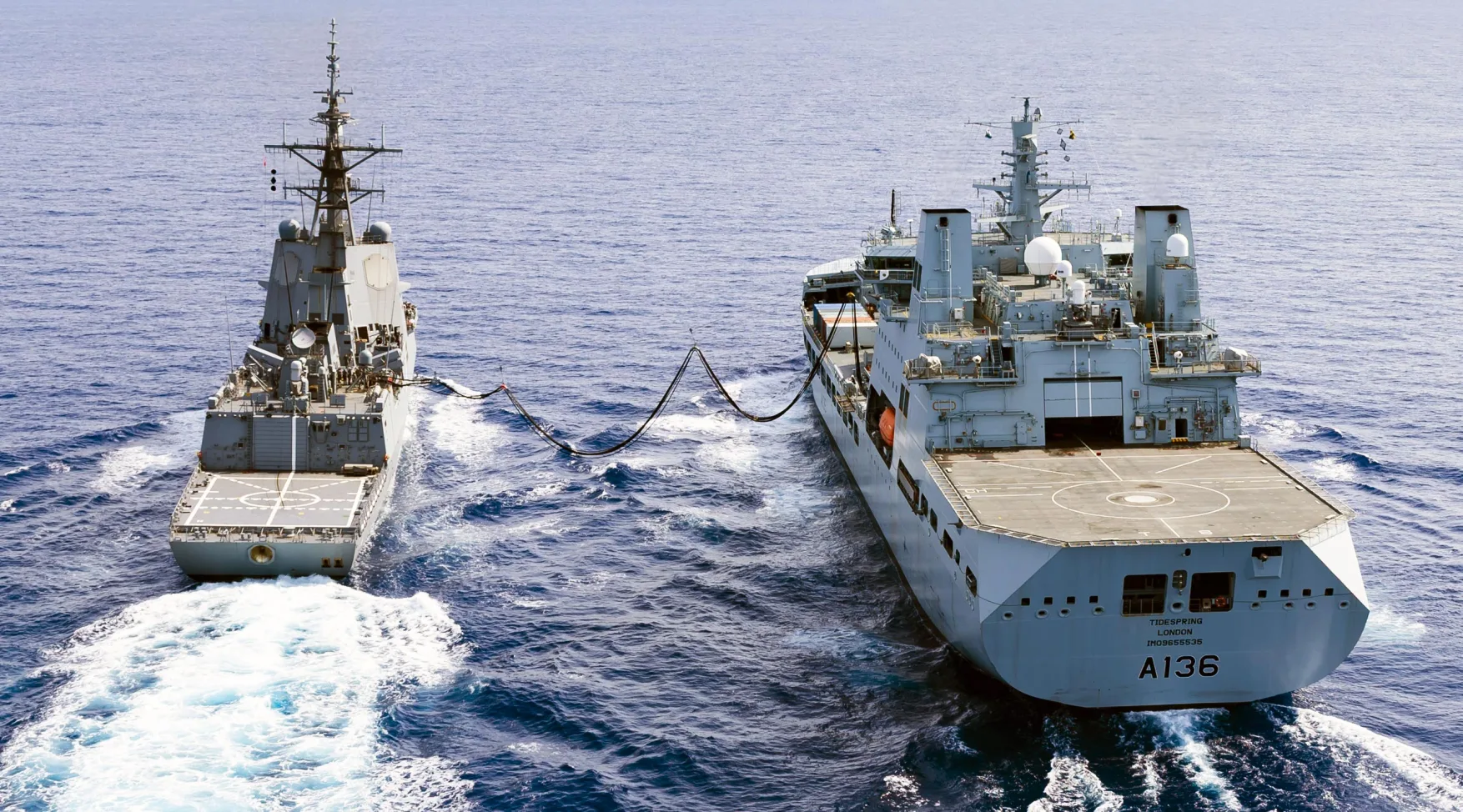 HMAS Brisbane replenished by RFA Tidespring during operations in the Philippine Sea.
HMAS Brisbane replenished by RFA Tidespring during operations in the Philippine Sea.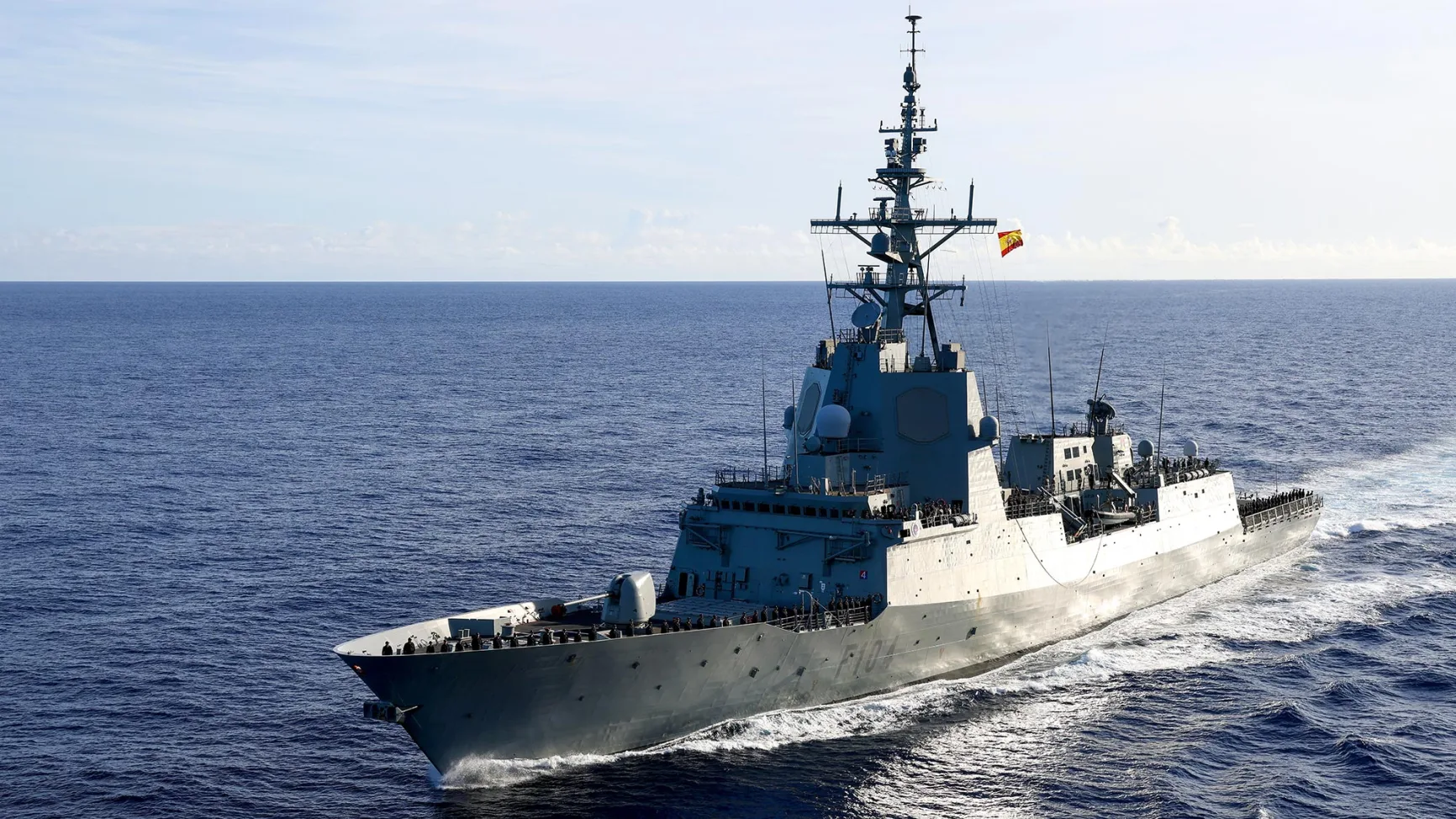 COMUKCSG waves farewell to Spanish frigate ESPS Méndez Núñez as she detached for the final time from the UK CSG on 8th August.
COMUKCSG waves farewell to Spanish frigate ESPS Méndez Núñez as she detached for the final time from the UK CSG on 8th August.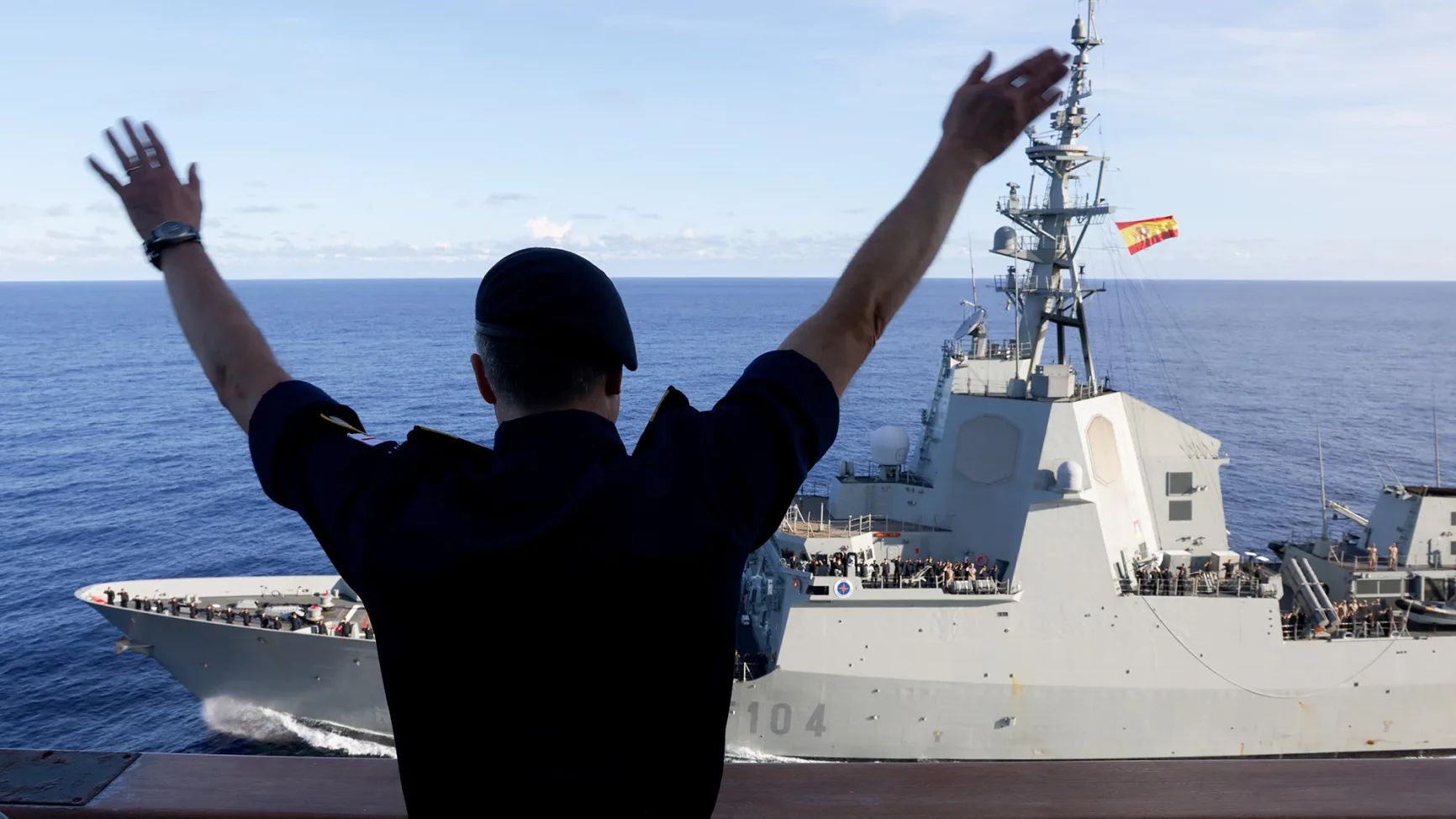
Following the completion of exercises, Prince of Wales and HMS Dauntless and HNoMS Roald Amundsen entered Yokosuka Naval Base this morning, beginning a three-week visit to Japan. HMS Richmond and RFA Tidespring have sailed to Busan, Republic of Korea, for regional engagement and port visits.
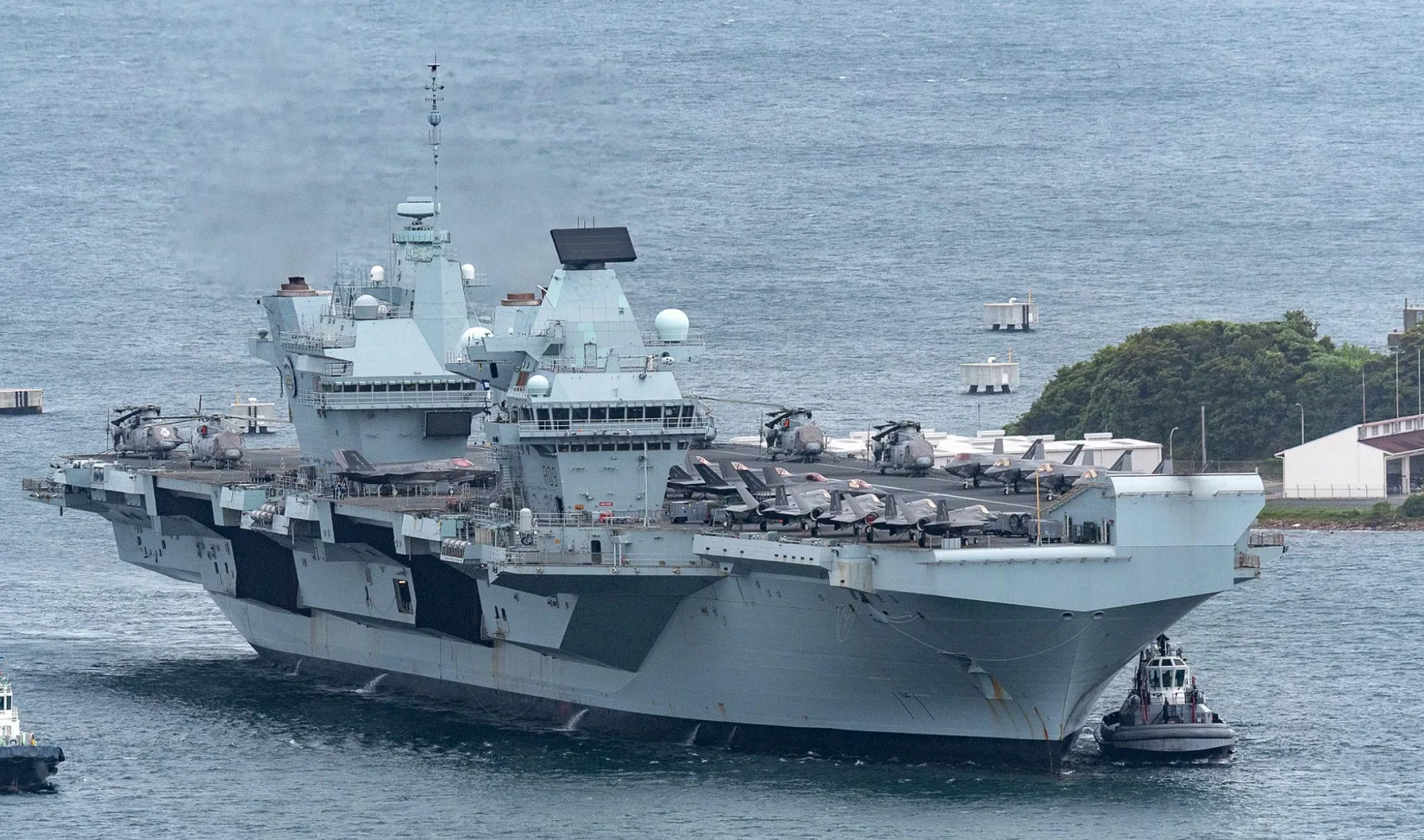 HMS Prince of Wales makes another spectacular port entry, following the visits to Singapore and Darwin (Photo: Alsace Class)
HMS Prince of Wales makes another spectacular port entry, following the visits to Singapore and Darwin (Photo: Alsace Class)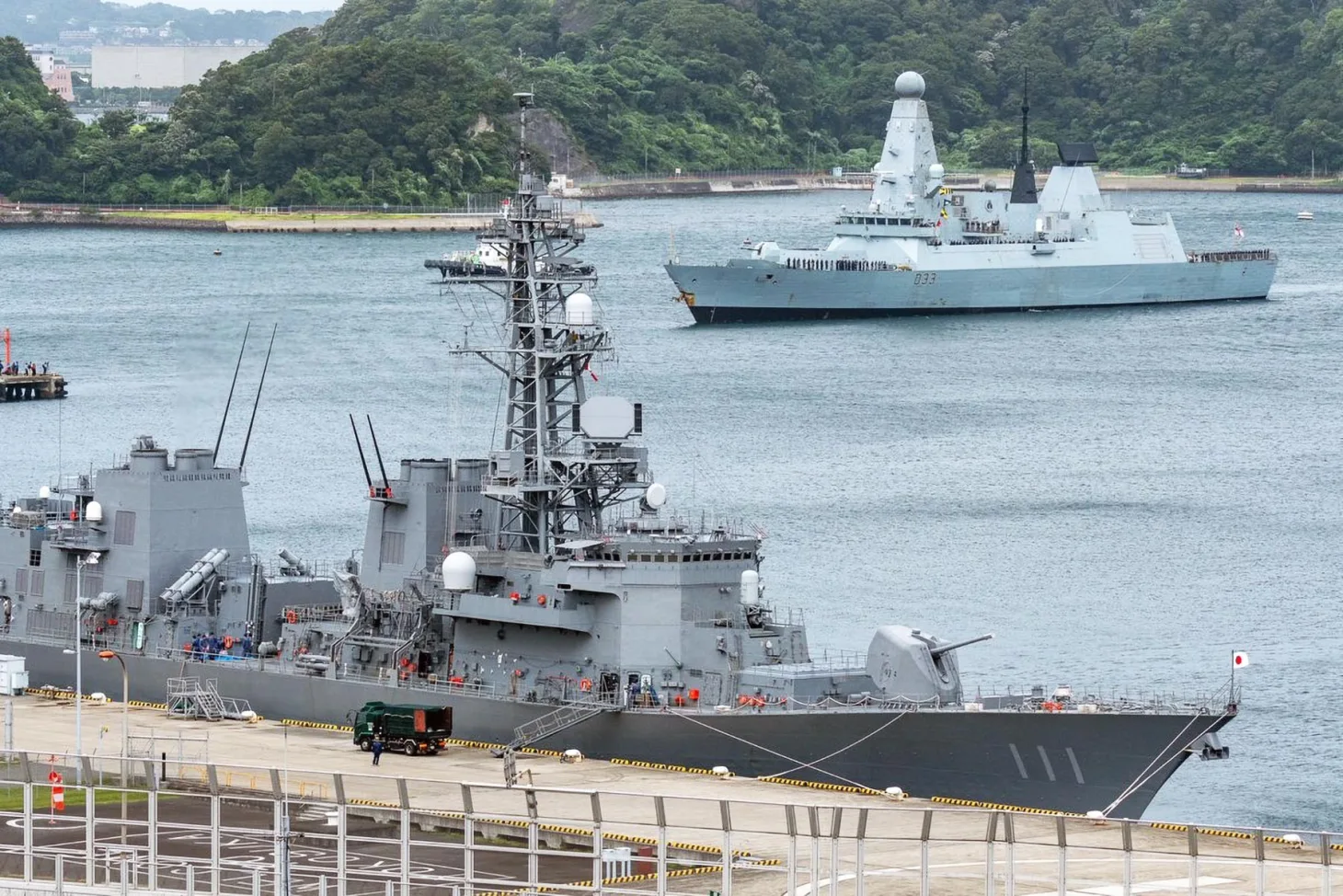 HMS Dauntless inbound to the harbour at Yokosuka Naval Base, JS Ōnami in the foreground (Photo: Alsace Class).
HMS Dauntless inbound to the harbour at Yokosuka Naval Base, JS Ōnami in the foreground (Photo: Alsace Class).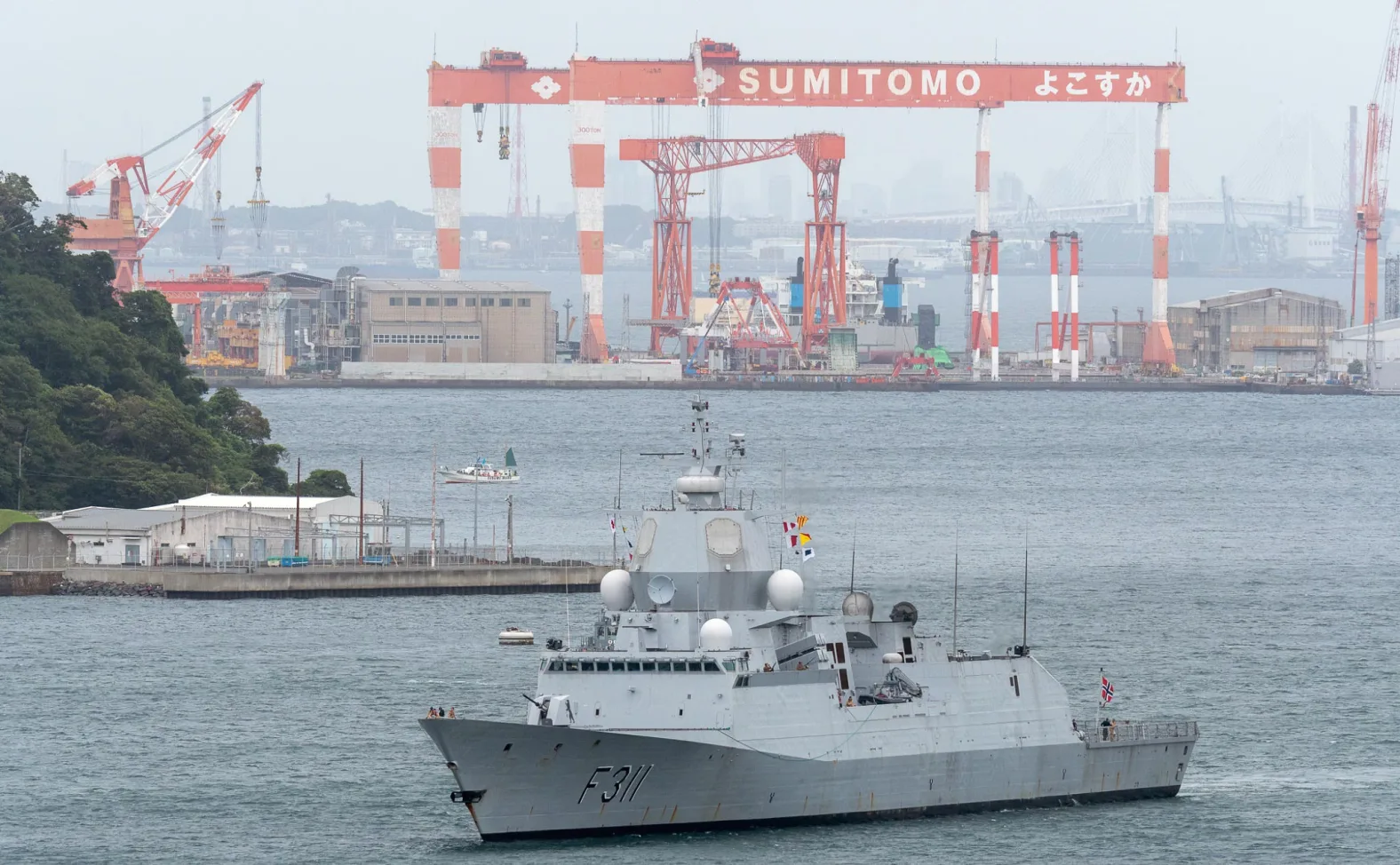 HNoMS Roald Amundsen arrives (Photo: Alsace Class).
HNoMS Roald Amundsen arrives (Photo: Alsace Class).
During the time in Japan, HMS Prince of Wales will undergo mid-deployment maintenance and host a programme of defence and industry events. From late August to early September, the carrier will visit Tokyo, where planned activities include the Pacific Future Forum, bringing together defence, security, and industry leaders to discuss emerging threats and technology, and a Defence and Security Industry Day showcasing UK innovation to Japanese partners.
Japanese ministers and senior officials are expected to visit the carrier, with discussions anticipated on future bilateral exercises, equipment cooperation, and the continued development of joint F-35B operations.
After the Japan visit, Operation Highmast will resume with further engagements across the region before the CSG begins its return transit. The successful integration with Kaga has demonstrated that the Queen Elizabeth-class can operate effectively with non-NATO partners, while giving Japan invaluable early experience in carrier-borne fixed-wing aviation.
